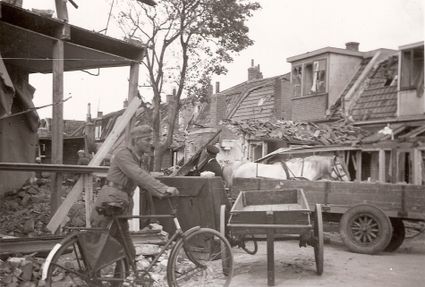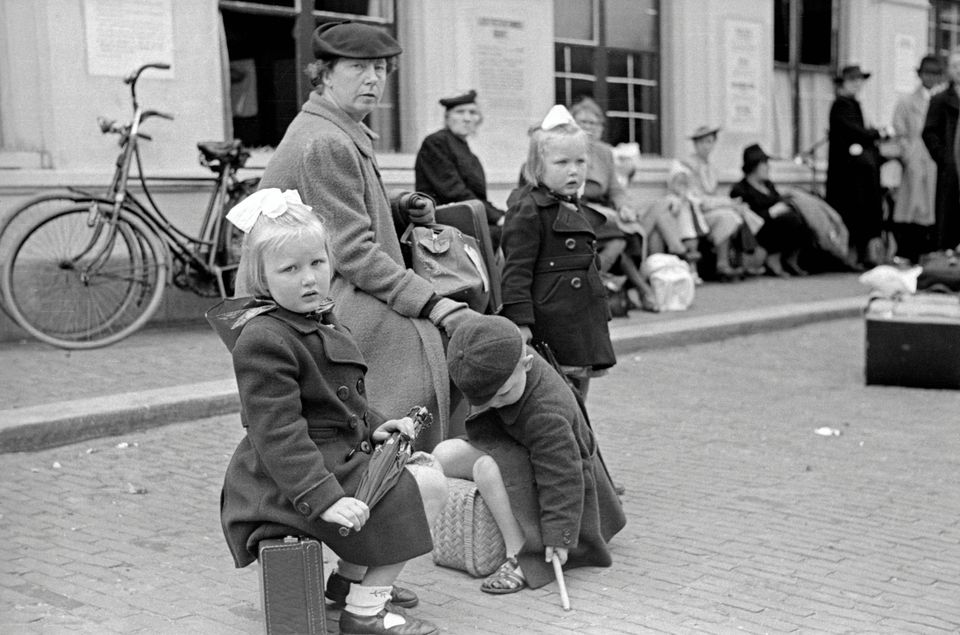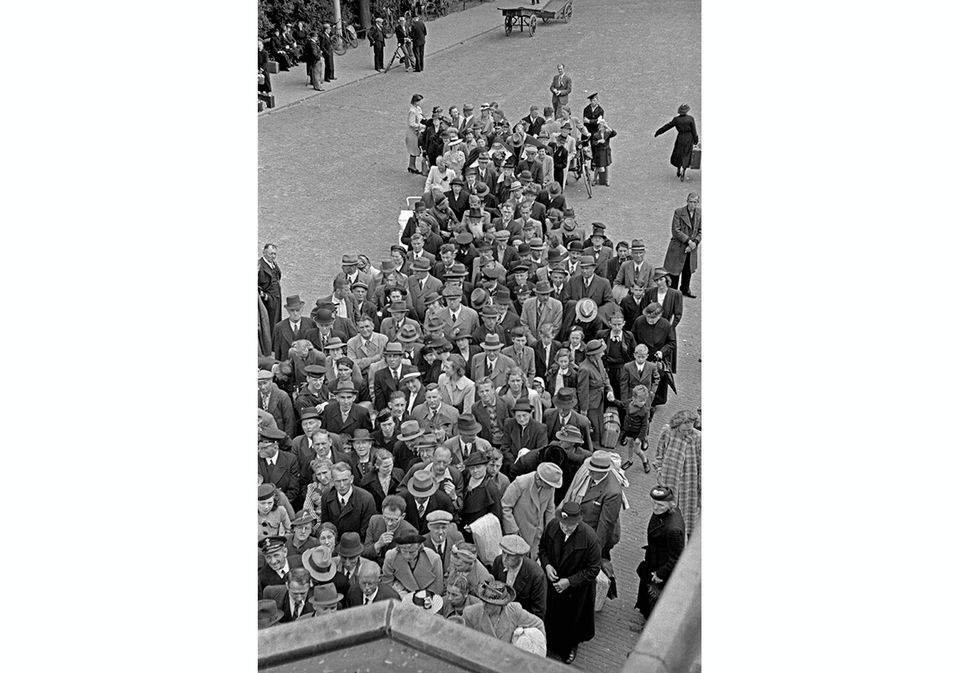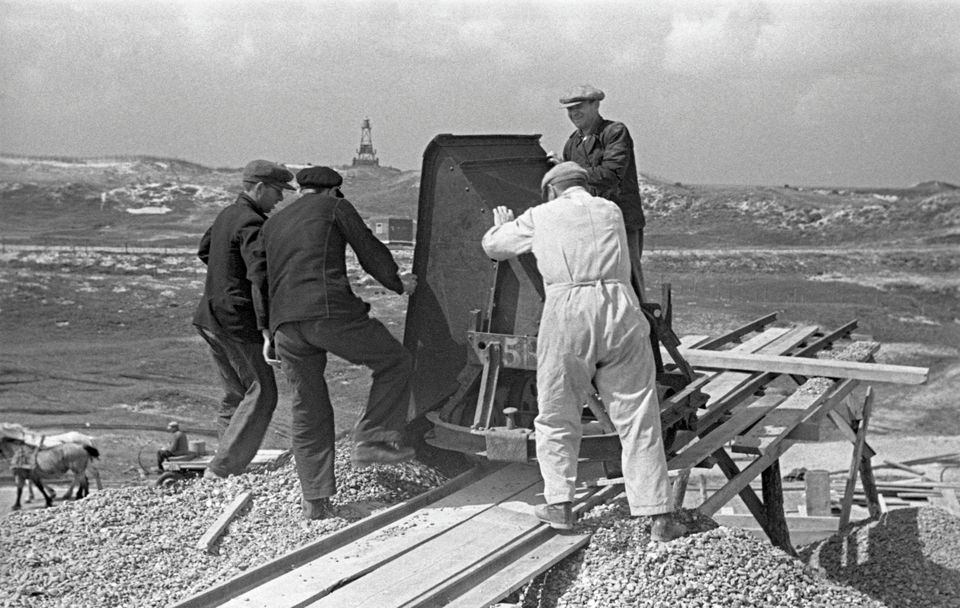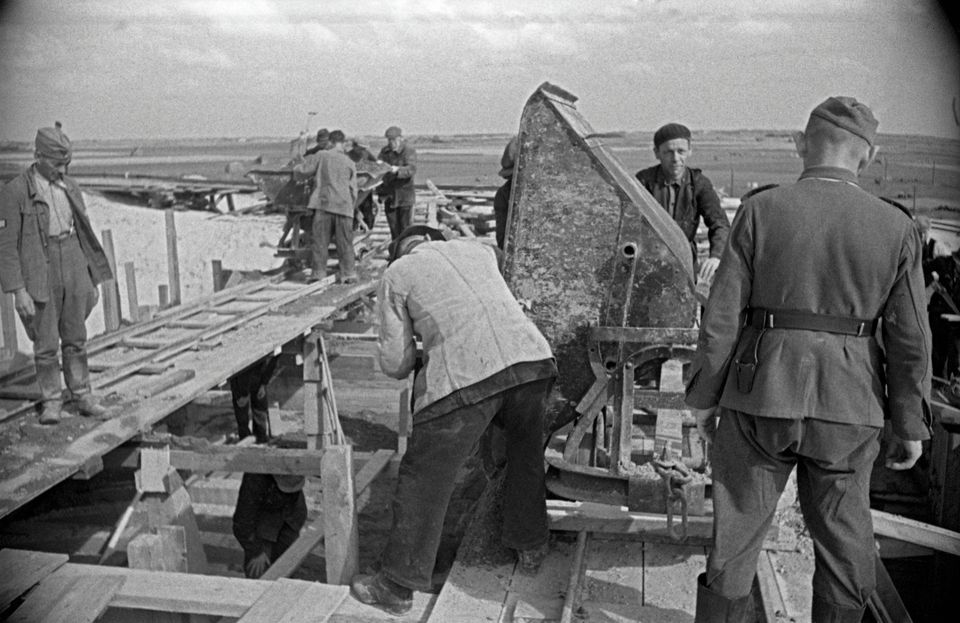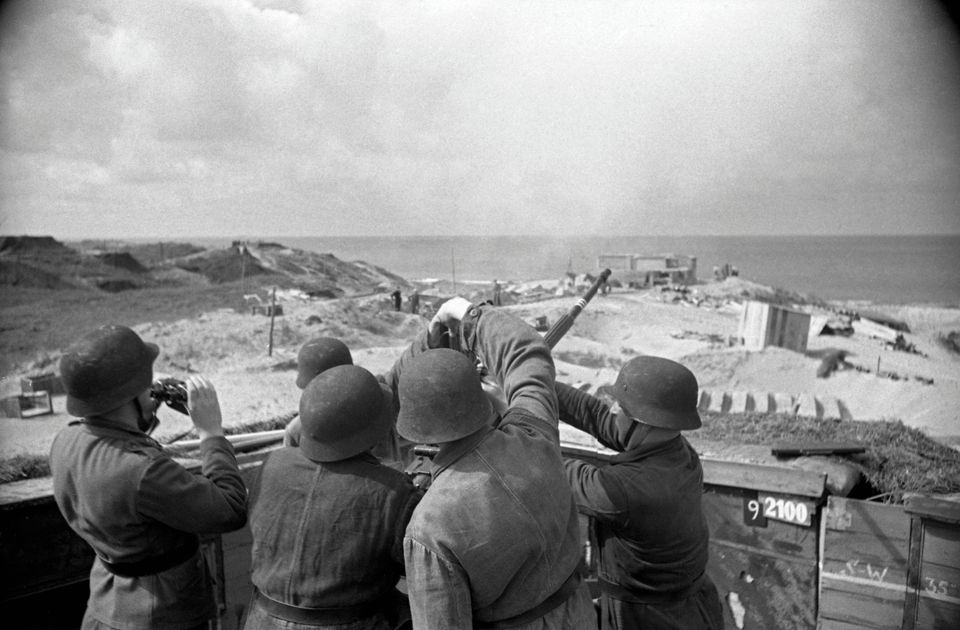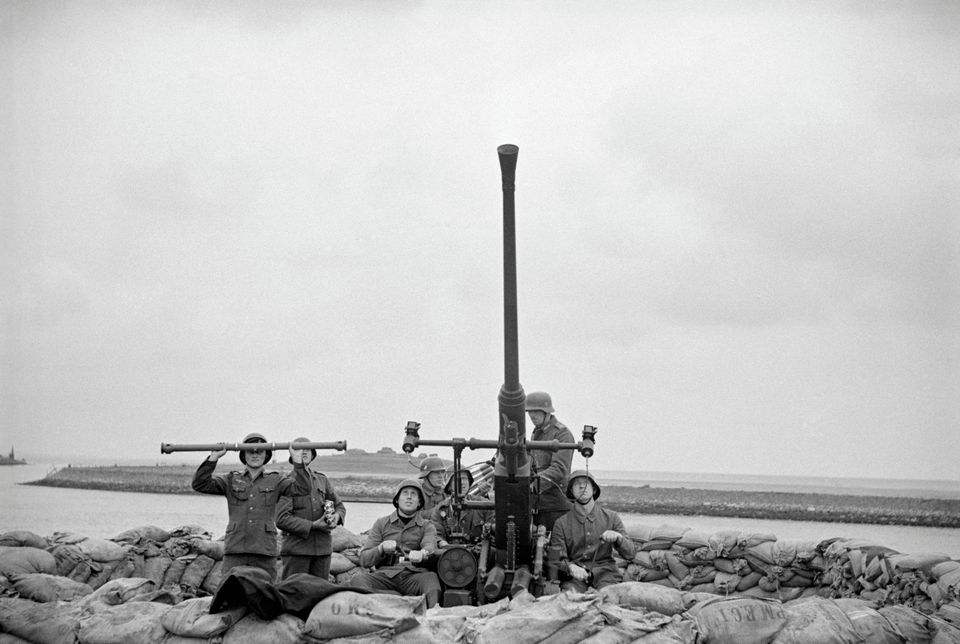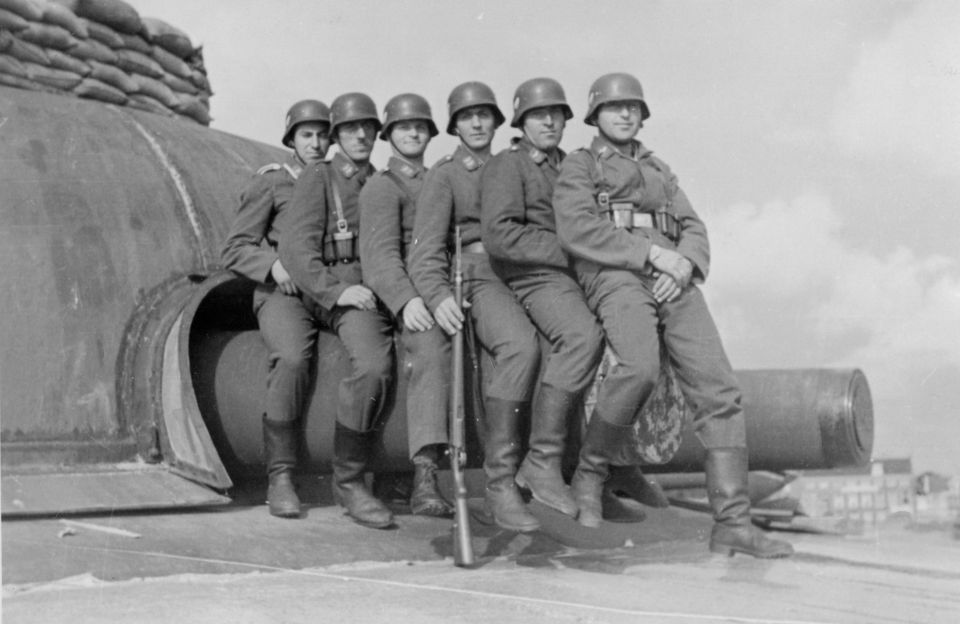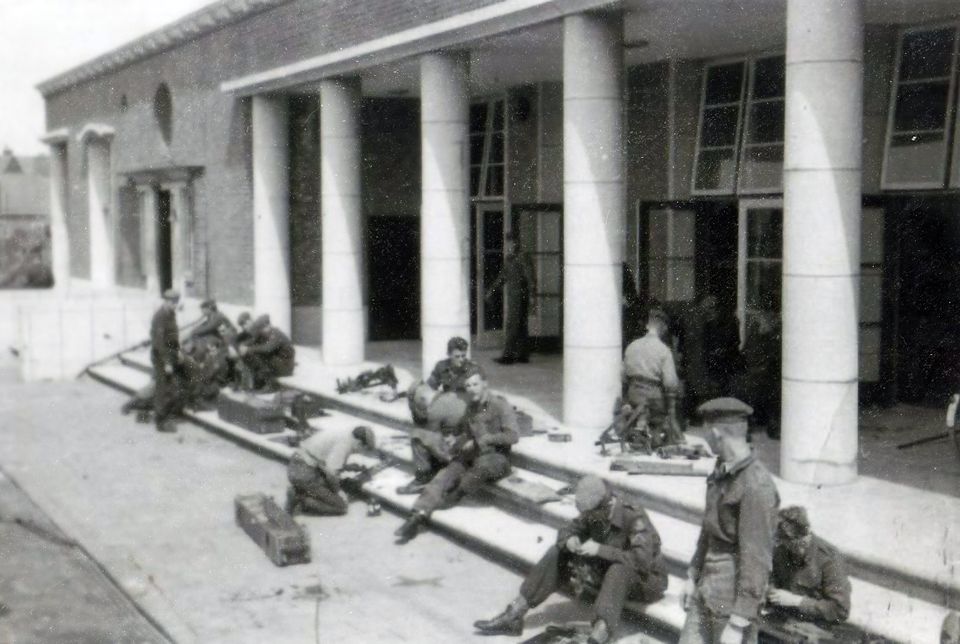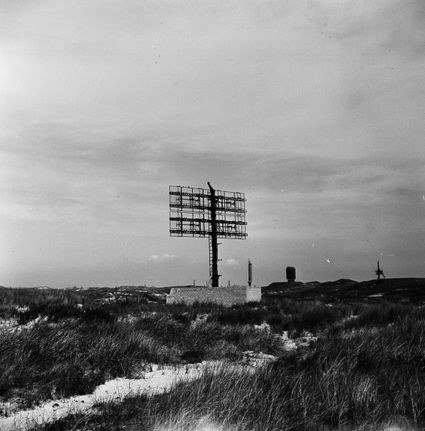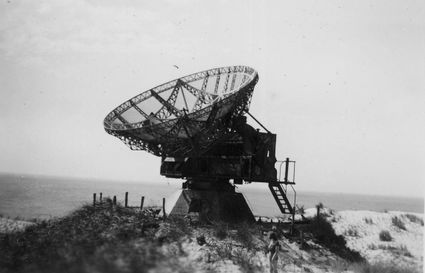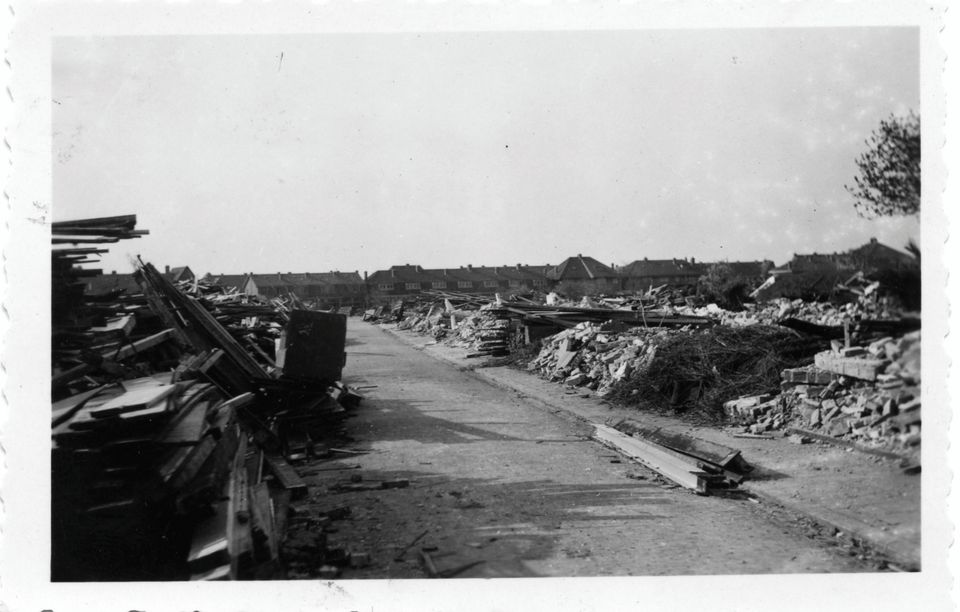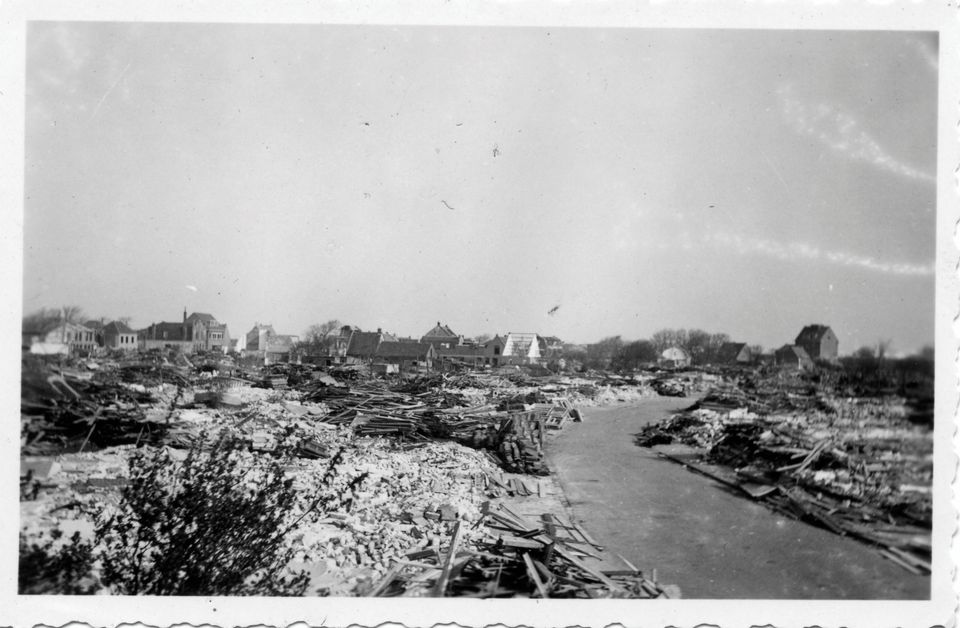Den Helder during the war years
Reading time: 6+ minutes
Den Helder and Texel were, just as Kornwerderzand, directly involved in the German attack on the Netherlands. On 10 May, German fighter planes attacked the nearby De Kooy airport, destroying several planes and a hangar. Much worse was the bombing of the city and the ships in Schulpegat by three German fighter-bombers on the evening of 14 May. The Rijkswerf and the city centre were hit, 26 were killed and 11 wounded. The bombing took place after the Netherlands had surrendered. The pilots had supposedly lost contact with their base.
Allied bombings
After the surrender of the Dutch army, Den Helder became a target for allied air raids. The harbour and the airport - used by the German navy - were attacked by heavy bombers and fighter-bombers more than 150 times. The Rijkswerf was the main target but many bombs hit the city, killing and wounding dozens of people.
Refugees
After the first bombing on the night of 24 to 25 June 1940, thousands of residents fled from Den Helder. People working in Den Helder stayed in the vicinity, sleeping out in the countryside and returning to the city to work during the day. Others left for parts of the Netherlands further away from the coast. As the war progressed, more and more residents found refuge outside of the city. Especially the unemployed. The bombings on Den Helder killed a total of 177 people. Many residents were injured or permanently disabled.
The Atlantic Wall
Its strategic location and large naval dockyard, made Den Helder an important part of the Atlantic Wall in the Netherlands. From 1942 on, the city had the second highest status of the defence line (Verteidigungsbereich). Den Helder was occupied by the German land forces (Heer) as well as the navy and air force. All three had their own tasks, defences and buildings. The Atlantic Wall in Den Helder had a total of 37 construction points; 88 sturdy, bomb-resistant bunkers and several hundreds of lighter, shrapnel-resistant bunkers were built.
Ground forces
The German ground forces were responsible for defence against attacks from the infantry and armoured divisions on land and from the sea. To the north, the coast formed the border of the defence line; to the south - the so-called land front - the border followed the original Dutch defence line during the mobilisation, at the Middenvliet. During the first years of the war, several shrapnel-resistant bunkers were erected here but they could not stop bombs.
Dragon’s teeth
In 1942, the Germans moved the defence line border to the south, making Julianadorp part of the Atlantic Wall. There was now an old and a new southern front. The latter consisted of a dragon’s teeth obstacle (Höcker) in the dune area and a zigzagging anti-tank ditch in the polder area. At the Balgzandkanaal, the front ended with a concrete anti-tank wall.
Flanking fire
For flanking fire - fire from the line to defend the terrain in front - sturdy bunkers with anti-tank artillery were built along the so-called Pantserkanaal. Crew bunkers were built at Blauwe Keet and Julianadorp. Two bunkers with lighter artillery were constructed at the dragon’s teeth obstacle. From there to the Nieuwe Diep, twelve sturdy bunkers for anti-tank artillery or machine guns were built and an anti-tank wall on the sea dike stopped vehicles and infantry troops from entering Den Helder.
Ground forces in Den Helder also had a command post for the commander and several shrapnel-resistant quarters on the Nollenterrein. A communications bunker stood next to the railway tracks, where the train station is now.
Navy
The Kriegsmarine focused on attacks from the sea and the air. Three heavy anti-aircraft artillery batteries were used against air raids (Flak, abbreviation of Flugzeugabwehrkanonen). The batteries at forts Dirks Admiraal and Erfprins were housed in concrete foundations. The Vangdam battery was placed in a field fortification.
Grafelijkheidsduinen
In addition to the heavy anti-aircraft artillery batteries, the Germans also had - for example on and around the Rijkswerf and at Fort Oostoever - light anti-aircraft artillery. This was used against low flying enemy aircraft. In the Grafelijkheidsduinen, below Huisduinen, a Flakgruppencommandostand was built to coordinate the air defence, as well as a number of crew bunkers.
No towers
Five coastal artillery batteries defended the coast against enemy ships. Three of these were housed in artillery bunkers. The most southern was Battery Zanddijk, consisting of two bunkers. The battery was meant to have towers, from the retired battle-cruiser Gneisenau, but by the end of the war, they had still not been installed.
Hospital
There were also coastal artillery batteries at Falga, Fort Kijkduin and Kaaphoofd. Battery Kaaphoofd's fire control post was embedded in the sea dike. The naval command post for the coastal batteries was a Marineartelleriekommandostand located south of Huisduinen. There was a small hospital bunker in the Timorpark to care for the wounded.
Casino
In 1942, the navy installed an artillery park on the former Galgenveld in Huisduinen for repairing and storing weapons and other materials. This park consisted of storage hangars and a machine workshop. The most representative buildings were the monumental entry gate, the administrative office and lodgings. It was commonly referred to as the Casino. This building was equipped with remarkable entry halls with stairways and colonnades.
Air force
The Luftwaffe, or the air force, was responsible for detecting enemy fighters and bombers and guiding their own fighter planes towards enemy targets. They built several radar installations in the dune area near the Kleine Keet especially for this purpose. The Mammut radar was the largest and it could detect planes as they were taking off from England. There were also two Wassermans with a slightly shorter range but very advantageous because they could be rotated.
Search and follow
The Freya radar, used as a search radar, had an even shorter range. When a plane was detected with this radar, the Würzburg radar was used to further track the plane and give information to the Flak batteries. Several Würzburg radars were installed in the dune area, by both the air force and the navy.
Knickebein
At the beginning of the German occupation, there was already an aircraft guidance system installed in the southern dune area. This so-called Knickebein sent signals to German bombers, guiding them to their target. The Knickebein was mainly used at the start of the war, when German bombers often carried out air raids in England.
Countryside infirmary
The air force was also active at De Kooy airport. Several bunkers were planned, but only the command post was actually built. West of De Kooy, along the Nieuwe Weg, an infirmary was built; the Krankenrevier. This was built in a traditional countryside style.
Ghost town
In preparation of a visit from Field Marshal Rommel to Den Helder on 24 March 1944, army command decided to demolish part of the coastal buildings in order to create a free line of fire for the defence. The entire city became a restricted area, forcing even more residents to leave. Only 7,000 people received an Ausweis to work in the city and by 1944 Den Helder had become a ghost town.
‘Ouwe Helder’, the village that made up the oldest part of the city, was demolished. The buildings behind the dike, along the Westgracht down to the harbour, were also demolished. Nearly 2,000 houses were destroyed. By January 1945, 1,925 of the originally nearly 9,900 houses in Den Helder had been demolished and another 2,125 were destroyed in bombings by the Allied Forces.
Liberation
It was not until 3 days after Liberation Day, on 8 May, that three English armoured vehicles drove through Julianadorp into Den Helder. Not many people were cheering by the side of the road. The city had been almost completely depopulated. Members of the Binnenlandse Strijdkrachten greeted the English liberators in front of the town hall.
The former German navy administrative building in Huisduinen – the Casino – now houses the Atlantic Wall Centre. In the centre you can find a lot of information about Den Helder during WWII. The Atlantic Wall Centre is also the starting point of the Atlantic Wall in the Wadden.
Visit Den Helder


